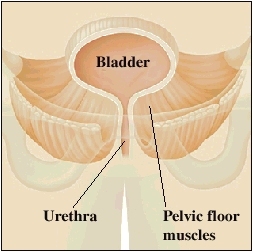
The pelvic floor muscles may weaken due to aging, pregnancy and vaginal childbirth, injury, surgery, chronic cough, or lack of exercise. If the pelvic floor is weak, your bladder and other pelvic organs may sag out of place. The urethra may also open too easily and allow urine to leak out. Kegel exercises can help you strengthen your pelvic floor muscles. Then they can better support the pelvic organs and control urine flow.
How Kegel exercises are done
Try each of the Kegel exercises described below. When you’re doing them, try not to move your leg, buttock, or stomach muscles.
- Contract as if you were stopping your urine stream. But do it when you’re not urinating.
- Tighten your rectum as if trying not to pass gas. Contract your anus, but don’t move your buttocks.
- You may place a finger or 2 in the vagina and squeeze your finger with your vagina to learn which muscles to tighten.
Try to hold each Kegel for a slow count to 5. You probably won’t be able to hold them for that long at first. But keep practicing. It will get easier as your pelvic floor gets stronger. Eventually, special weights that you place in your vagina may be recommended to help make your Kegels even more effective. Visit your healthcare provider if you have difficulties doing Kegel exercises.
Helpful hints
Here are some tips to follow:
· Do your Kegels as often as you can. The more you do them, the faster you’ll feel the results.
· Pick an activity you do often as a reminder. For instance, do your Kegels every time you sit down.
· Tighten your pelvic floor before you sneeze, get up from a chair, cough, laugh, or lift. This protects your pelvic floor from injury and can help prevent urine leakage.
.

 RSS Feed
RSS Feed









